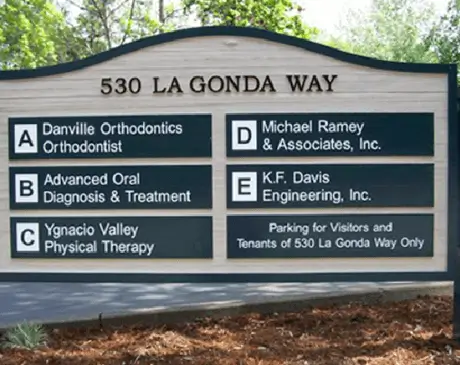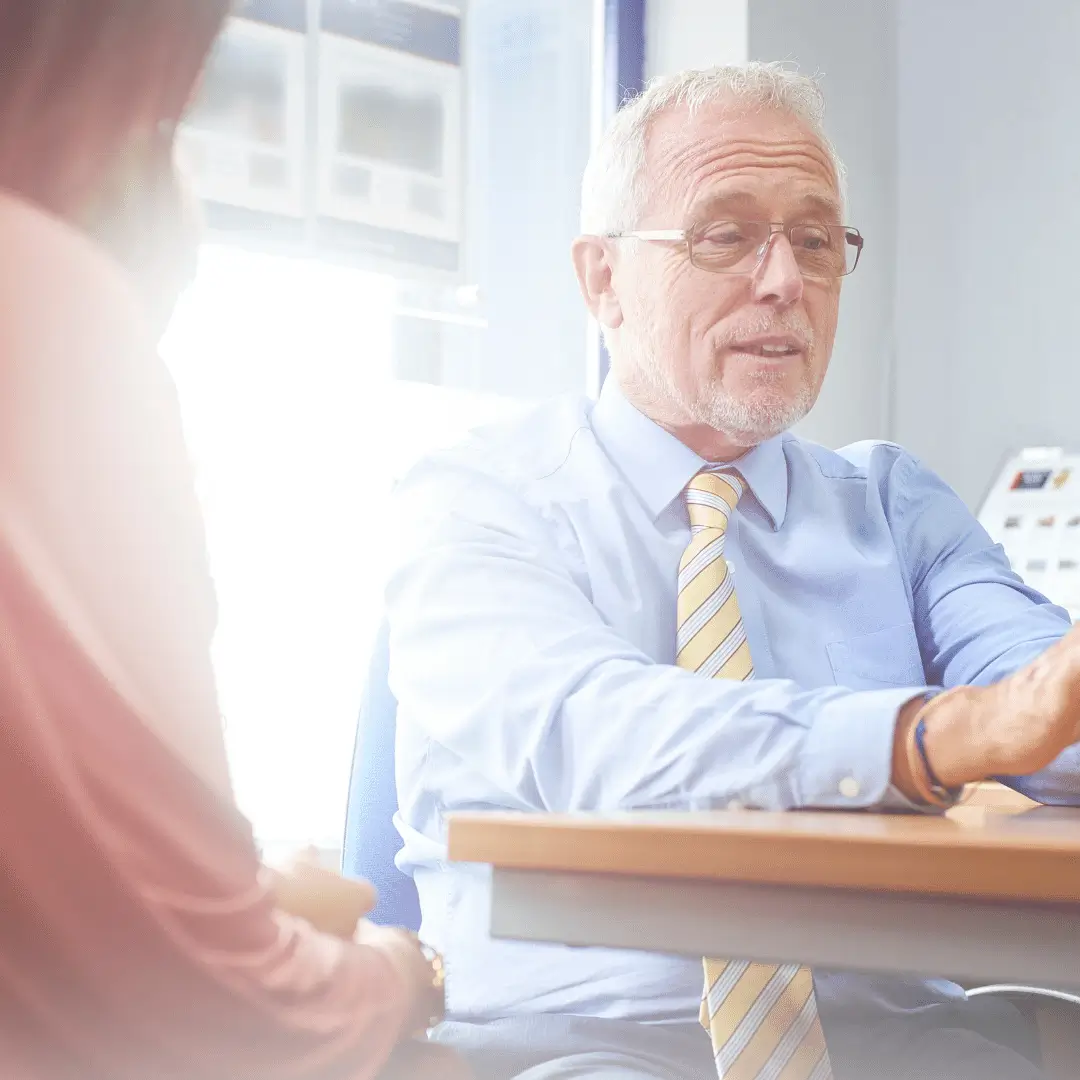What Is Orthodontics?
If you wish for perfectly straight teeth without the time and hassle of braces, Invisalign® clear aligners may be the solution. Experienced orthodontist Hoss Abar, DDS, MSD, and the professional team at Danville Orthodontics offer Invisalign aligners at their easy-to-find location in Pinole, California.

What Is "Orthodontics" and Why Do People Get Braces?
Orthodontics is a special discipline of dentistry concerned with aligning the teeth and jaws in order to improve one’s smile and oral health. Through orthodontic treatment, problems like crooked or crowded teeth, overbites or underbites, incorrect jaw positions and disorders of the jaw joints are corrected.
When is the right time for braces?
Patients with orthodontic problems can benefit from treatment at nearly any age. An ideal time for the first visit is at age seven. Generally, patients that require orthopedic jaw changes will be started at this age. If early intervention isn’t necessary the patient will be placed on six months recall visits until ready for orthodontics treatment at about age 11 or 12. An increasing number of adults are also undergoing treatment to improve their dental health, wellbeing and smiles. It’s never too late to start.
How do I Know I Need Orthodontics?
Come in for a complimentary consultation. Only your dentist and orthodontist can determine whether you can benefit from orthodontics. Our office provides free consultation to provide a better service to our community.
If you have any of the following issues, you may be a candidate for orthodontic treatment:
- Overbite, sometimes called “buck teeth” — where the upper front teeth lie too far forward (stick out) over the lower teeth
- Underbite — a “bulldog” appearance where the lower teeth are too far forward or the upper teeth too far back
- Crossbite — when the upper teeth do not come down slightly in front of the lower teeth when biting together normally
- Open bite — space between the biting surfaces of the front and/or side teeth when the back teeth bite together
- Misplaced midline— when the center of your upper front teeth does not line up with the center of your lower front teeth
- Spacing — gaps, or spaces, between the teeth as a result of missing teeth or teeth that do not “fill up” the mouth
- Crowding — when there are too many teeth for the dental ridge to accommodate
What kind of braces will I have to wear?
Your orthodontist will know what appliance is best for your particular problem, but the patient often has a choice. Braces generally come in different varieties: The most popular type of brackets are, metal or sapphire, that are bonded to teeth and are far less noticeable. All use wires to move the teeth to the desired position. Invisalign may also be an option for teens and adults.
How long will I have to wear braces?
That depends upon your treatment plan. Things that increase the complexity of treatment include, but are not limited to, spacing, crowding occlusion and development stages. Most patients can count on wearing full braces between 18 and 30 months, followed by the wearing of a retainer to maintain the final results.
Will treatment be uncomfortable?
The interconnecting wires are tightened at each visit, creating mild pressure on the brackets and bands to shift teeth or jaws gradually into the desired position. Your teeth and jaws may feel slightly sore after each visit, but the discomfort is brief. Keep in mind also that some teeth may need to be extracted to make room to relieve excess crowding for proper jaw alignment.
Do I have to avoid any foods or personal habits?
Yes. Cut down on sweets, chips and soda pop. Sugary and starchy foods generate acids and plaque that can cause tooth decay and promote gum disease. Cut healthy, hard foods like carrots or apples into smaller pieces. Sticky, chewy sweets like caramel can cause wire damage and broken brackets. Avoid hard and crunchy snacks that can break braces, including popcorn, hard bread or pizza crusts, nuts and hard candy. More don’ts: ice cube chewing, thumb sucking, excessive mouth breathing, lip biting, nail biting and pushing your tongue against your teeth.
For further information regarding personal care please visit the following video.
What about home care of my teeth with braces?
With braces, oral hygiene is more important than ever. Braces have tiny spaces where food particles and plaque get trapped. Brush carefully after every meal with fluoride toothpaste and a soft-bristled toothbrush. Rinse thoroughly and check your teeth in the mirror to make sure they’re clean. Take time to floss between the brackets and under the wires with the help of a floss threader. Have your teeth cleaned at least every six months to keep your gums and teeth healthy. Insufficient cleaning while wearing braces can cause enamel staining around brackets or bands and permanent damage to the teeth.
Who will provide my dental care?
It is necessary to continue visiting your family dentist for periodic check ups and cleanings. Keeping up with dental visits as prescribed by your dentist will help you to maintain good oral and dental health during the course of your orthodontic treatment.What Is "Orthodontics" and Why Do People Get Braces?
Orthodontics is a special discipline of dentistry concerned with aligning the teeth and jaws in order to improve one’s smile and oral health. Through orthodontic treatment, problems like crooked or crowded teeth, overbites or underbites, incorrect jaw positions and disorders of the jaw joints are corrected.
When is the right time for braces?
Patients with orthodontic problems can benefit from treatment at nearly any age. An ideal time for the first visit is at age seven. Generally, patients that require orthopedic jaw changes will be started at this age. If early intervention isn’t necessary the patient will be placed on six months recall visits until ready for orthodontics treatment at about age 11 or 12. An increasing number of adults are also undergoing treatment to improve their dental health, wellbeing and smiles. It’s never too late to start.
How do I Know I Need Orthodontics?
Come in for a complimentary consultation. Only your dentist and orthodontist can determine whether you can benefit from orthodontics. Our office provides free consultation to provide a better service to our community.
If you have any of the following issues, you may be a candidate for orthodontic treatment:
- Overbite, sometimes called “buck teeth” — where the upper front teeth lie too far forward (stick out) over the lower teeth
- Underbite — a “bulldog” appearance where the lower teeth are too far forward or the upper teeth too far back
- Crossbite — when the upper teeth do not come down slightly in front of the lower teeth when biting together normally
- Open bite — space between the biting surfaces of the front and/or side teeth when the back teeth bite together
- Misplaced midline— when the center of your upper front teeth does not line up with the center of your lower front teeth
- Spacing — gaps, or spaces, between the teeth as a result of missing teeth or teeth that do not “fill up” the mouth
- Crowding — when there are too many teeth for the dental ridge to accommodate
What kind of braces will I have to wear?
Your orthodontist will know what appliance is best for your particular problem, but the patient often has a choice. Braces generally come in different varieties: The most popular type of brackets are, metal or sapphire, that are bonded to teeth and are far less noticeable. All use wires to move the teeth to the desired position. Invisalign may also be an option for teens and adults.
How long will I have to wear braces?
That depends upon your treatment plan. Things that increase the complexity of treatment include, but are not limited to, spacing, crowding occlusion and development stages. Most patients can count on wearing full braces between 18 and 30 months, followed by the wearing of a retainer to maintain the final results.
Will treatment be uncomfortable?
The interconnecting wires are tightened at each visit, creating mild pressure on the brackets and bands to shift teeth or jaws gradually into the desired position. Your teeth and jaws may feel slightly sore after each visit, but the discomfort is brief. Keep in mind also that some teeth may need to be extracted to make room to relieve excess crowding for proper jaw alignment.
Do I have to avoid any foods or personal habits?
Yes. Cut down on sweets, chips and soda pop. Sugary and starchy foods generate acids and plaque that can cause tooth decay and promote gum disease. Cut healthy, hard foods like carrots or apples into smaller pieces. Sticky, chewy sweets like caramel can cause wire damage and broken brackets. Avoid hard and crunchy snacks that can break braces, including popcorn, hard bread or pizza crusts, nuts and hard candy. More don’ts: ice cube chewing, thumb sucking, excessive mouth breathing, lip biting, nail biting and pushing your tongue against your teeth.
For further information regarding personal care please visit the following video.
What about home care of my teeth with braces?
With braces, oral hygiene is more important than ever. Braces have tiny spaces where food particles and plaque get trapped. Brush carefully after every meal with fluoride toothpaste and a soft-bristled toothbrush. Rinse thoroughly and check your teeth in the mirror to make sure they’re clean. Take time to floss between the brackets and under the wires with the help of a floss threader. Have your teeth cleaned at least every six months to keep your gums and teeth healthy. Insufficient cleaning while wearing braces can cause enamel staining around brackets or bands and permanent damage to the teeth.
Who will provide my dental care?
It is necessary to continue visiting your family dentist for periodic check ups and cleanings. Keeping up with dental visits as prescribed by your dentist will help you to maintain good oral and dental health during the course of your orthodontic treatment.
Services

Orthodontics Emergency
When you or your child encounter an urgent orthodontic need, having a specialist you know and trust can make a world of difference in the outcome.

Gummy Smile
Do you feel like your smile shows an excessive level of gum tissue? A gummy smile is a common complaint among the men and women who seek the services of Hoss Abar, DDS, MSD, at Danville Orthodontics in Danville, California.

TMJ Specialist
Your jawbone and the joints that connect it to your skull play numerous roles in your daily life, even though you might not think about this part of your body until something goes wrong.

Braces
If you’re hoping for a straighter smile, braces offer a time-honored solution with some really exciting, innovative updates. At Danville Orthodontics in Danville, California.

Retainers
Once your orthodontic treatment is complete, retainers are your tool to ensure those results last. At Danville Orthodontics in Danville, California, Hoss Abar, DDS, MSD, creates retainers that you or your child will wear to preserve that gorgeous smile.

Adult Orthodontics
If you think that braces are just for kids and that you can’t correct your alignment issues as an adult, you owe it to yourself to meet with Hoss Abar, DDS, MSD, of Danville Orthodontics in Danville, California.

Invisalign
If you’re hoping for a straighter smile but aren’t looking forward to more than a year of a metallic grin, Invisalign is an option worth considering. General and cosmetic dentist Hoss Abar, DDS, MSD at Danville Orthodontics in Danville.

Surgical Orthodontics
If you have orthodontic needs that cannot be corrected with braces or other devices, surgical orthodontics might be your best option.
